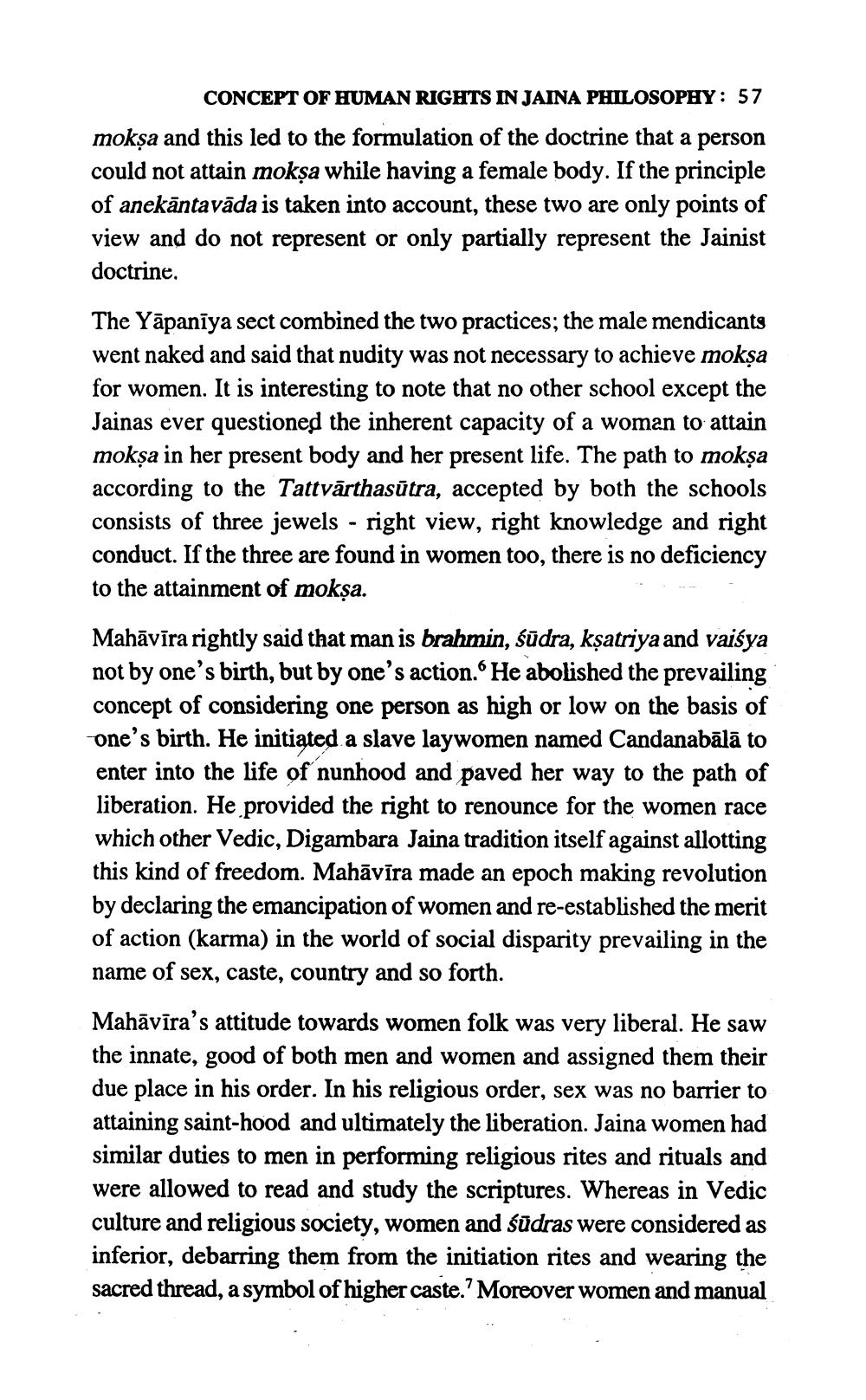________________
CONCEPT OF HUMAN RIGHTS IN JAINA PHILOSOPHY : 57
mokṣa and this led to the formulation of the doctrine that a person could not attain mokṣa while having a female body. If the principle of anekāntavāda is taken into account, these two are only points of view and do not represent or only partially represent the Jainist doctrine, The Yāpanīya sect combined the two practices; the male mendicants went naked and said that nudity was not necessary to achieve mokşa for women. It is interesting to note that no other school except the Jainas ever questioned the inherent capacity of a woman to attain mokṣa in her present body and her present life. The path to mokșa according to the Tattvārthasūtra, accepted by both the schools consists of three jewels - right view, right knowledge and right conduct. If the three are found in women too, there is no deficiency to the attainment of mokșa. Mahāvīra rightly said that man is brahmin, sūdra, ksatriya and vaisya not by one's birth, but by one's action. He abolished the prevailing concept of considering one person as high or low on the basis of one's birth. He initiated a slave laywomen named Candanabālā to enter into the life of nunhood and paved her way to the path of liberation. He provided the right to renounce for the women race which other Vedic, Digambara Jaina tradition itself against allotting this kind of freedom. Mahāvīra made an epoch making revolution by declaring the emancipation of women and re-established the merit of action (karma) in the world of social disparity prevailing in the name of sex, caste, country and so forth. Mahāvīra's attitude towards women folk was very liberal. He saw the innate, good of both men and women and assigned them their due place in his order. In his religious order, sex was no barrier to attaining saint-hood and ultimately the liberation. Jaina women had similar duties to men in performing religious rites and rituals and were allowed to read and study the scriptures. Whereas in Vedic culture and religious society, women and sūdras were considered as inferior, debarring them from the initiation rites and wearing the sacred thread, a symbol of higher caste.? Moreover women and manual




